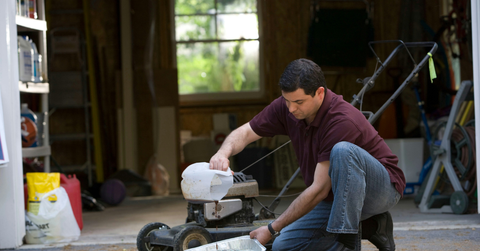Pest and Termite Control: Proven Strategies to Protect Your Home Year-Round

Nov. 12 2025, Published 1:25 a.m. ET
Protecting your home from pests and termites is not a seasonal concern—it’s a year-round responsibility. These unwelcome invaders can cause significant damage, compromise your health, and disrupt your peace of mind. While many homeowners react to infestations only after they occur, proactive pest and termite control is far more effective and economical. By implementing proven strategies throughout the year, you can safeguard your property and maintain a healthy living environment. This article explores the most effective methods for keeping pests and termites at bay, no matter the season.
Understanding the Threats to Your Home
Pests come in many forms, from ants and cockroaches to rodents and spiders. Each species poses unique risks, ranging from structural damage to the spread of disease. Termites, in particular, are among the most destructive. These insects feed on cellulose found in wood, paper, and drywall, silently compromising the integrity of your home’s framework. Unlike other pests, termites often remain hidden until the damage is extensive, making early detection and prevention critical.
Seasonal changes influence pest behavior. Warmer months tend to bring increased activity, as insects and rodents seek food and shelter. Cooler months may drive pests indoors, where they find refuge in attics, basements, and wall voids. Understanding these patterns is essential for developing a year-round defense strategy.
Spring: The Season of Awakening and Prevention
Spring marks the beginning of increased pest activity. As temperatures rise, insects emerge from dormancy and begin to reproduce. This is the ideal time to inspect your home for signs of infestation and address vulnerabilities. Start by examining the foundation, windows, and doors for cracks or gaps that could serve as entry points. Seal these openings with caulk or weather stripping to prevent access.
Termites often swarm in spring, making this a crucial time for inspection. Look for discarded wings near windowsills or mud tubes along the foundation. If you suspect termite activity, contact a licensed pest control professional for a thorough evaluation. Applying preventative treatments in spring can stop infestations before they begin.
Summer: Heightened Activity and Vigilance
Summer is peak season for most pests. Ants invade kitchens, mosquitoes breed in standing water, and rodents forage for food. Maintaining cleanliness is key during this time. Store food in airtight containers, dispose of garbage regularly, and eliminate sources of moisture. Outdoor maintenance is equally important. Trim vegetation away from the house, clean gutters, and ensure proper drainage to reduce breeding grounds.
Termites continue to be active in summer, especially in humid climates. Monitor wooden structures such as decks, fences, and sheds for signs of damage. Consider installing physical barriers or chemical treatments to deter termite access. Regular inspections and prompt action can prevent costly repairs.
Autumn: Preparing for Indoor Invasions
As temperatures begin to drop, pests seek warmth and shelter indoors. Rodents, spiders, and cockroaches are particularly common during autumn. This is the time to reinforce your home’s defenses. Inspect the attic and basement for signs of nesting or droppings. Repair damaged screens, install door sweeps, and ensure vents are properly covered.
Termites may slow their activity in cooler weather, but they do not disappear. Continue monitoring for signs of infestation and maintain preventative treatments. Autumn is also a good time to schedule professional inspections, as pest control companies can identify hidden threats and recommend targeted solutions.
Winter: Maintenance and Monitoring
Winter may seem like a reprieve from pest problems, but it’s actually a critical time for monitoring and maintenance. Many pests remain active indoors, thriving in the warmth of your home. Rodents can chew through insulation and wiring, posing fire hazards. Cockroaches and spiders may hide in dark, undisturbed areas.
Keep storage areas organized and clean to reduce hiding spots. Inspect utility lines and plumbing for leaks, which can attract pests. Continue sealing gaps and maintaining cleanliness to prevent infestations. Termites may be less active in winter, but their colonies persist. Ongoing vigilance ensures that any signs of damage are addressed promptly.
Integrated Pest Management: A Holistic Approach
Effective Elite pest and termite control, LLC requires more than seasonal tactics—it demands a comprehensive strategy known as Integrated Pest Management (IPM). This approach combines preventive measures, monitoring, and targeted treatments to minimize risks and environmental impact. IPM emphasizes education, sanitation, and structural maintenance as the foundation of pest control.
Rather than relying solely on chemical treatments, IPM encourages the use of natural deterrents, physical barriers, and biological controls. For example, introducing beneficial insects that prey on pests or using traps to monitor activity can reduce reliance on pesticides. When chemical treatments are necessary, they are applied strategically and safely.
Professional Support and Long-Term Protection

While DIY methods can be effective for minor issues, professional pest control services offer expertise and resources that are invaluable for long-term protection. Licensed technicians can identify vulnerabilities, apply advanced treatments, and provide ongoing monitoring. Many companies offer year-round service plans that include regular inspections and preventative applications.
Choosing a reputable pest control provider ensures that your home receives the best possible care. Look for companies with certified technicians, transparent pricing, and a commitment to environmentally responsible practices. Investing in professional support not only protects your property but also provides peace of mind.
Conclusion: A Year-Round Commitment to Safety
Pest and termite control is not a one-time task—it’s a continuous commitment to protecting your home and family. By understanding seasonal threats, implementing proven strategies, and embracing a holistic approach, you can maintain a pest-free environment throughout the year. Whether through diligent maintenance or professional support, taking proactive steps today ensures a safer, healthier tomorrow.


